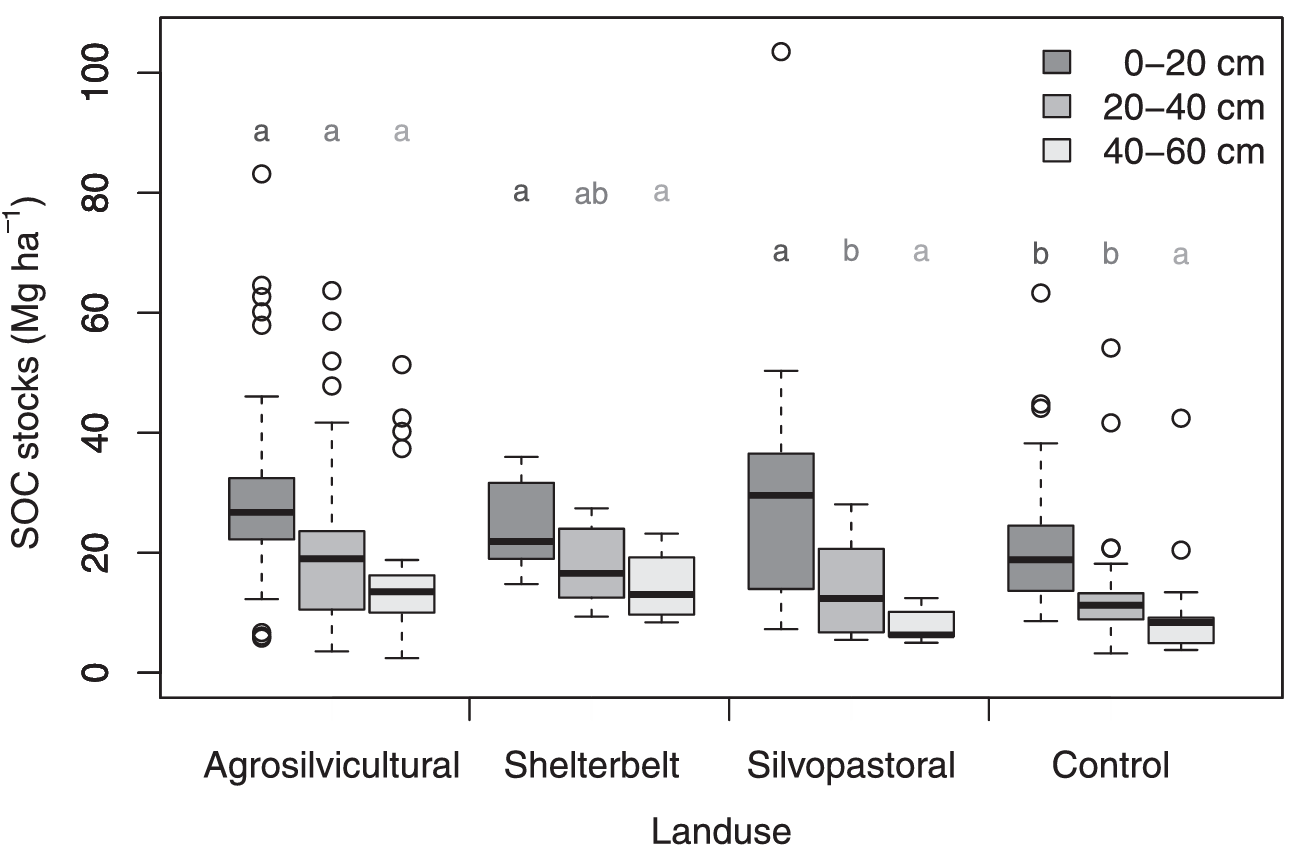August 1, 2021 | Agriculture, Ecosystems & Environment | Source |
Introduction: Agroforestry systems (AFS) play a vital role in soil conservation and climate change mitigation in China, yet quantitative evidence on their soil organic carbon (SOC) sequestration potential remains limited. This meta-analysis, conducted by researchers from the Technical University of Munich (Germany) and Fujian Normal University (China), reviewed 43 studies across 38 sites encompassing shelterbelt, agrosilvicultural, and silvopastoral systems. SOC sequestration rates were evaluated at three soil depths (0–20, 20–40, and 40–60 cm) using a Random Forest model to identify key drivers, including soil type, system age, climate zone, temperature, precipitation, initial SOC levels, land use history, and tree species composition.
Key findings: Shelterbelts demonstrated the highest SOC sequestration rates across all soil layers—0.92 Mg ha⻹ yr⻹ in topsoil, 0.72 Mg ha⻹ yr⻹ in upper subsoil, and 0.52 Mg ha⻹ yr⻹ in lower subsoil— followed by agrosilvicultural and silvopastoral systems. AFS-type, initial SOC, and soil classification (WRB classes) were the most influential factors, particularly in topsoil and subsoil layers. High initial SOC levels, common in former grasslands, often limited additional sequestration and occasionally led to short-term declines. System age influenced topsoil sequestration but was negligible at greater depths, while land use history ranked lower in importance. Shelterbelts' erosion control benefits further contributed to enhanced SOC accumulation. Subtropical zones showed the most effective performance, likely due to higher primary productivity.
These findings highlight the strategic value of agroforestry—especially shelterbelt and agrosilvicultural systems—in advancing climate-smart agriculture in China. Future studies should explore under-researched AFS types, such as agrosilvopastoral or home-garden systems, and incorporate detailed soil and carbon input data to refine sequestration estimates and inform broader agroforestry applications.

Figure | SOC stocks in topsoils (0–20cm), upper subsoils (20–40cm) and lower subsoils (40–60cm) in different agroforestry systems and the control land use system. Characters show significance between land use types.




